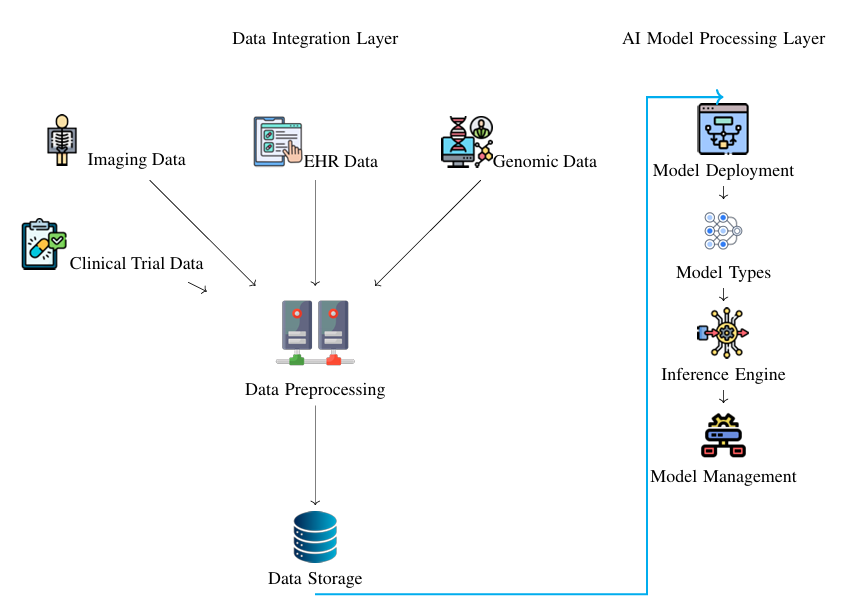AI-Driven Personalized Treatment Planning in Radiology: Architectural Design and Implementation Strategies
Weng Chan
Hackensack Meridian School of Medicine
https://orcid.org/0009-0008-6096-5951
Keywords: AI-driven, clinical decision support system, data integration, personalized treatment planning, radiology, system architecture, workflow optimization
Abstract
This research proposes and outlines a framework for developing and deploying an AI-driven personalized treatment planning system in radiology. The architecture of the proposed framework integrates diverse data sources, including imaging data, electronic health records, genomic information, and clinical trial data. Using advanced preprocessing techniques like radiomics, natural language processing, and normalization, the system ensures that data inputs are of high quality and ready for AI model training. The AI model processing layer is designed for both flexibility and scalability, employing containerized environments and deep learning frameworks to manage various data types and tasks effectively. At the core of the system is a clinical decision support system (CDSS) that combines rule-based logic with AI-generated recommendations, enabling the creation of personalized treatment plans tailored to individual patients. The user interface prioritizes ease of use for clinicians, featuring interactive dashboards, clear data visualizations, and automated report generation that translates complex AI insights into practical, actionable information. To ensure seamless integration with existing healthcare systems, the framework includes standardized APIs and data exchange protocols, along with robust security measures that comply with relevant regulations. The implementation strategy covers everything from setting up the necessary infrastructure to managing data, developing and validating models, and finally integrating the system into clinical environments. Continuous monitoring and feedback loops are built into the system, allowing for ongoing improvements based on user input and new clinical data. This framework aims to streamline radiology workflows, enhance patient outcomes, and remain adaptable to changes in clinical practices and regulations.


